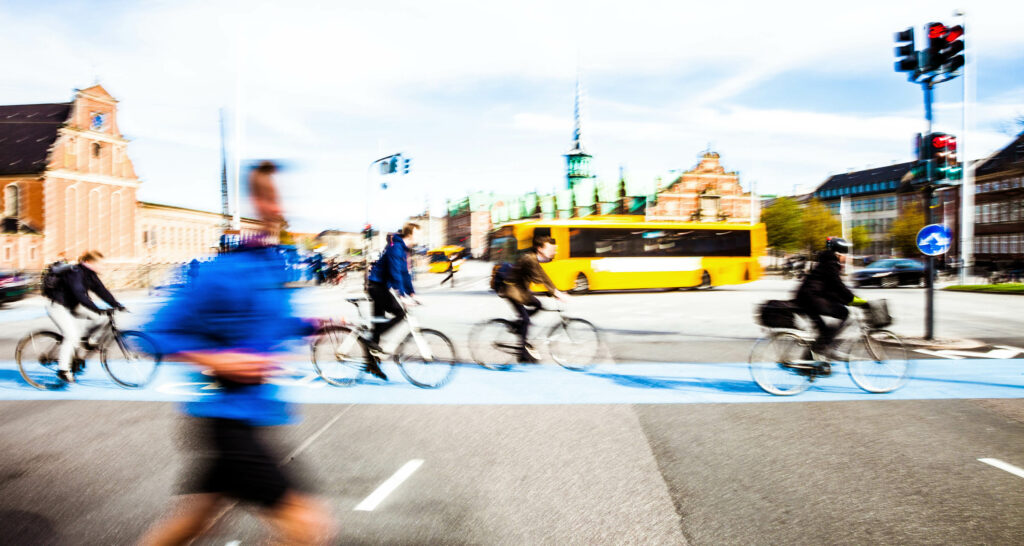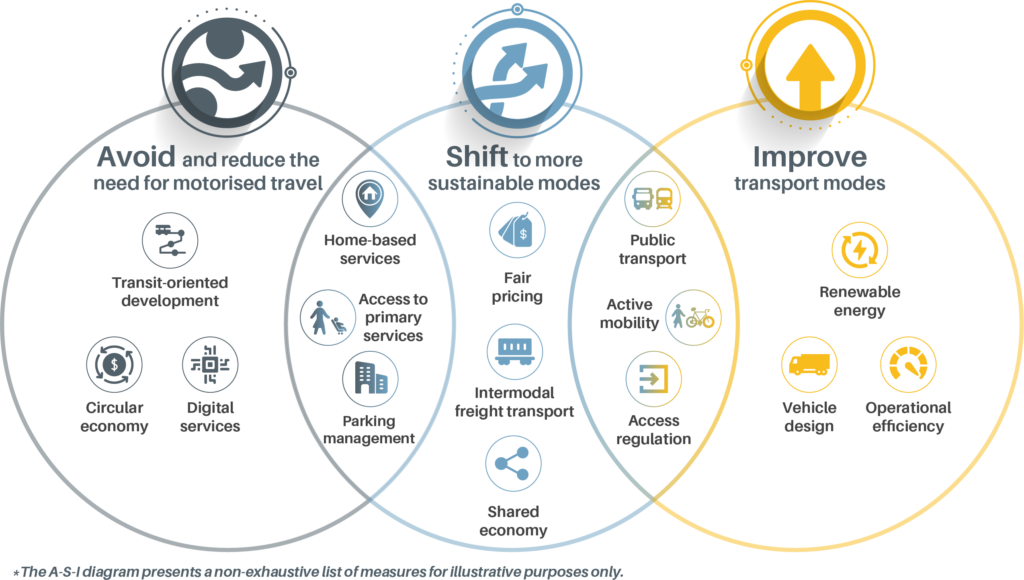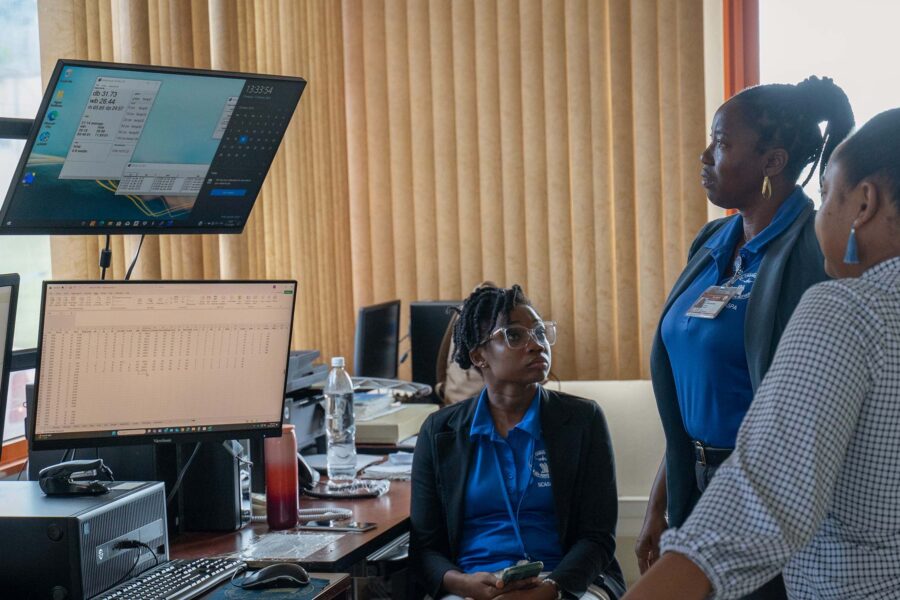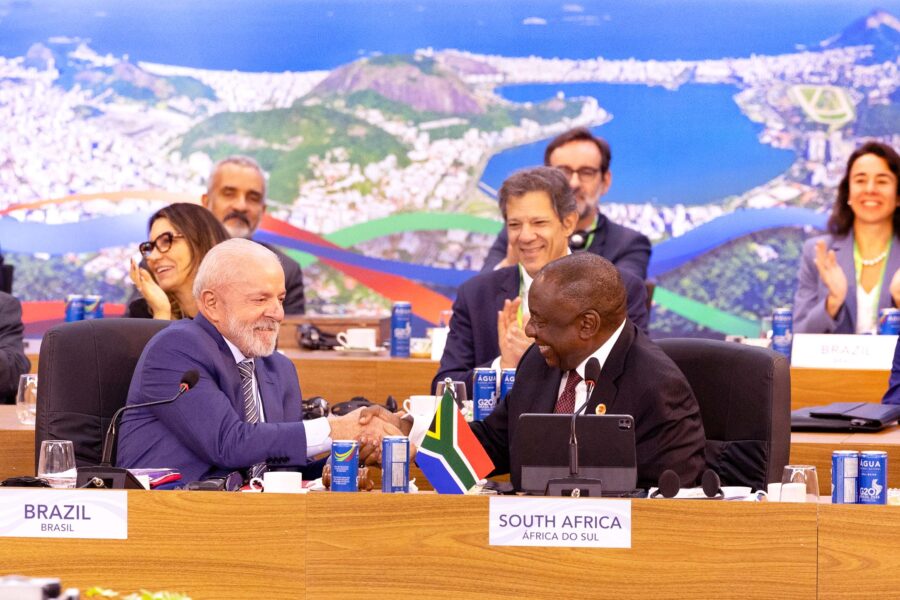Mobility without carbon
A net-zero and inclusive mobility future for all doesn’t depend on futuristic, as-yet-unknown transport solutions. We already have the necessary tools, knowledge, and resources, but must urgently deploy them in new, transformative ways
Climate — Global

Humanity tends to look ahead, always anxious for what tomorrow holds, and often putting off what in fact needs to be done today (or yesterday). With this comes a fanciful approach to the future, one influenced by decades of media that painted it as a time of technological wonders able to solve all our problems. Sleek, clean, and wondrous, futuristic depictions of society have always given humanity a reason to look forward, showing us what is possible with human ingenuity and a little whimsy.
But the solutions to today’s most pressing challenges will not arise from the dreams of tomorrow. Climate change, biodiversity loss, and other environmental emergencies, coupled with Gilded-Age levels of inequality and a breakdown in meaningful multilateralism and trust in institutions, require urgent action now with existing tools, knowledge, and resources. Nowhere is this action more urgent than in cities, where the vast majority of people live. Urban centers are also where the highest levels of greenhouse gas emissions are churned out, either directly or through carbon-intensive proxies scattered throughout the world, producing a nonstop supply of consumer goods.
Simply put, the transformation of cities requires us to stop procrastinating, put aside the dream that the future will solve everything, and get to work making the world a better place for all.
When it comes to the way we move people and goods, the solutions are often less technologically oriented than some may expect. Essentially, we need to focus less on the flying cars and rockets to the moon, and more on the transport modes and mobility systems that are open, accessible, and useful. With fewer than eight years left to achieve the 2030 Agenda for Sustainable Development and its 17 Sustainable Development Goals (SDGs), the clock is ticking. We must urgently take the transformative actions needed to enable passenger and freight transport systems for equitable, decarbonized, resilient pathways, and ultimately a net-zero mobility future for all.
Sustainable, low-carbon mobility to transform our societies
Enabling sustainable, low-carbon transport and mobility worldwide has explicit as well as implicit implications for the success of the entire 2030 Agenda and other critical global policy frameworks. There are social, environmental, and economic “multiplier effects” that go well beyond the scale of financial investment. The SLOCAT Wheel on Transport and the SDGs articulates the breadth of the positive interactions between sustainable, low-carbon transport and mobility and the 2030 Agenda. It shows that the future of mobility must be:
But how do we realize zero-carbon, sustainable transport and mobility systems? Which actions need to be taken on the ground, in cities and communities globally, to ensure transport and mobility can assist in this transformation?
Three words: avoid, shift, improve.
The Avoid-Shift-Improve Framework puts forward a series of policy measures that ensure a systemic, integrated, inter-modal, and balanced approach, critical to unleashing the full benefits of sustainable, low-carbon transport. It outlines real solutions for real urban transformation, helping cities make their transport and mobility systems more equitable, healthy, green, and resilient.
As a result, to achieve a net-zero future that puts people and planet first, our transport and mobility systems must be oriented around the following:
- avoiding unnecessary motorized trips based on proximity and accessibility, as well as spurring the transformation of land use and planning
- shifting to less carbon-intensive modes – that is, from private vehicles to public transport, shared mobility, walking and cycling, water-based freight, electrified road–rail freight, and cargo bikes for last-mile deliveries, among others
- improving vehicle design, energy efficiency, and clean energy sources for different types of freight and passenger vehicles

Avoid-Shift-Improve Framework (SLOCAT Partnership, 2021)
“Shift” and “improve” measures – and the overall decarbonization of the transport sector – are most effective when combined with “avoid” measures. Avoid measures allow cities to limit vehicle traffic to within the capacity of roadways, and they reward travelers who use transport modes that are resource, space, and energy efficient. Many avoid measures aim to actively manage transport demand, with approaches such as congestion charging, carbon pricing for all transport modes, and incentives for behavioral modifications leading to wide-scale changes.
Thanks to the efforts of the sustainable, low-carbon transport community, there is ever-growing evidence showing that avoid and shift measures can account for 40% to 60% of transport emission reductions. They can be further complemented by improve measures that seek to decarbonize the more car-centric focus of cities around the world. They help reduce environmental impacts, improve access to socio-economic opportunities, increase logistics efficiency, reduce congestion, improve air quality, and enhance road safety.
With most of the world’s people now living in cities, and this share projected to reach 68% by 2050, sustainable, low-carbon transport and mobility options for urban dwellers are increasingly needed to manage the inherent pressures on transport demand. Building on avoid-shift-improve, the transformation of urban transport can be achieved and will surely enhance the lives and livelihoods of people the world over. This will lead to an evolution of how people come to understand transport and its collective value as a service for all. Ultimately, these efforts can move the needle towards realizing the 2030 Agenda for Sustainable Development and securing the Paris Agreement’s 1.5°C target.
The ongoing pandemic, acute geopolitical instability, and planetary crises like climate change, air pollution, and biodiversity loss are the clarion calls needed for the world to realize that a better future can only be secured through human intervention in the here and now. Bold steps are needed to address the catastrophic impacts of our carbon-intense global economic system, especially when it comes to changing our transport and mobility systems. With increasingly high commodity prices, and particularly the cost of fuel, a reduction in the dependency on fossil fuels for transport can be the catalyst for transforming our society and taking the first steps towards a just transition. We could either sit back and continue to paint the dreams of a better future, or harness this momentum to achieve the necessary transformations for a net-zero, inclusive, and resilient future for all.
The time is now!





